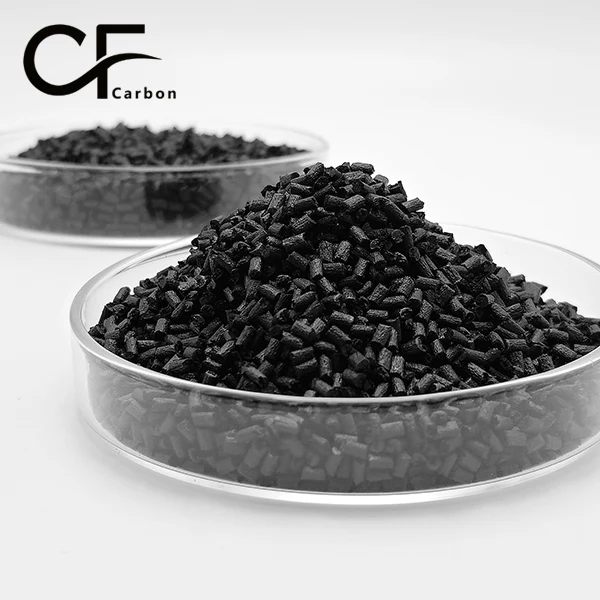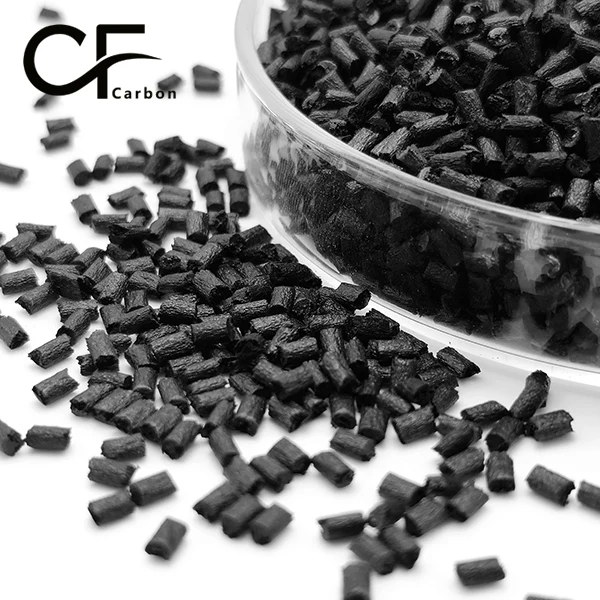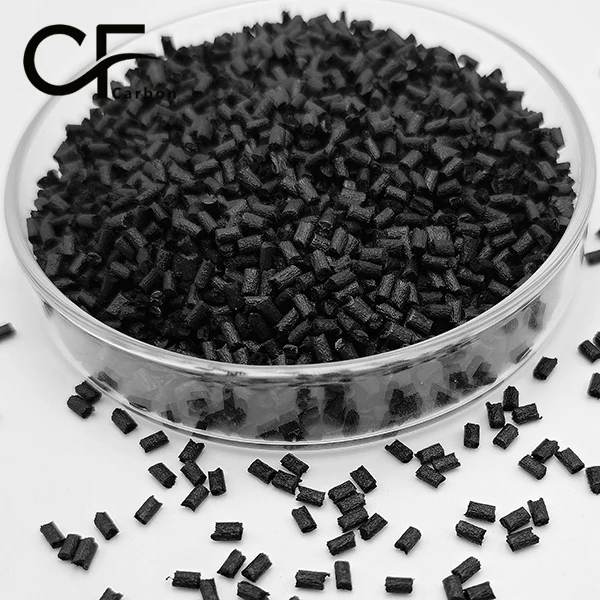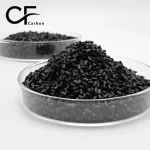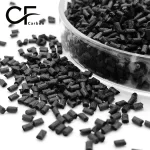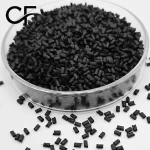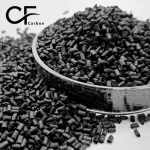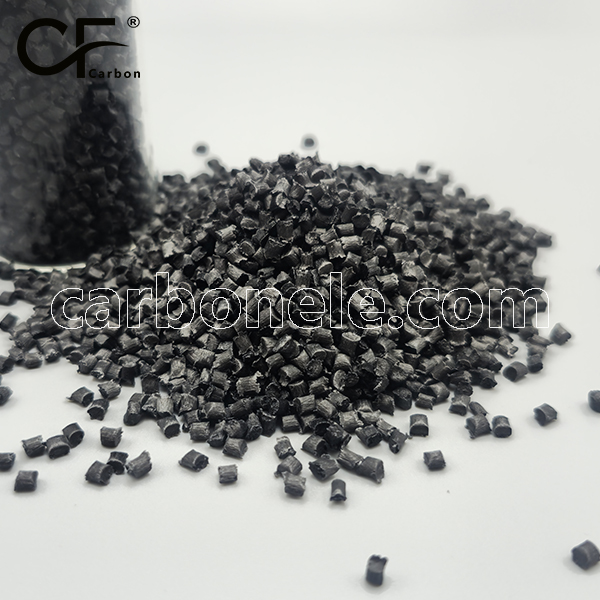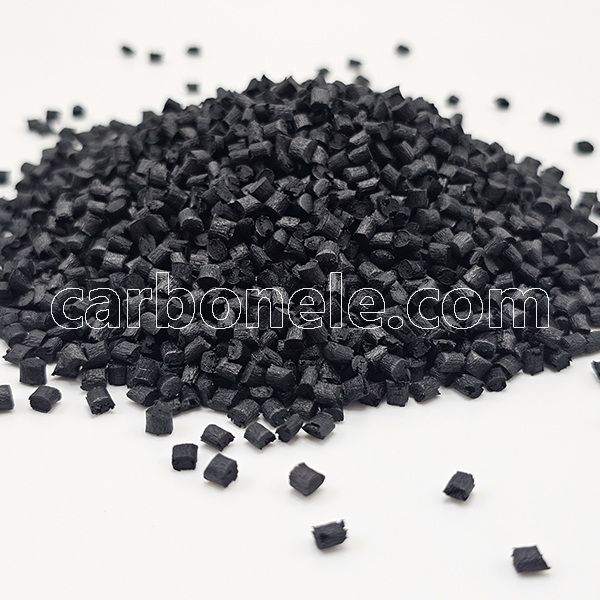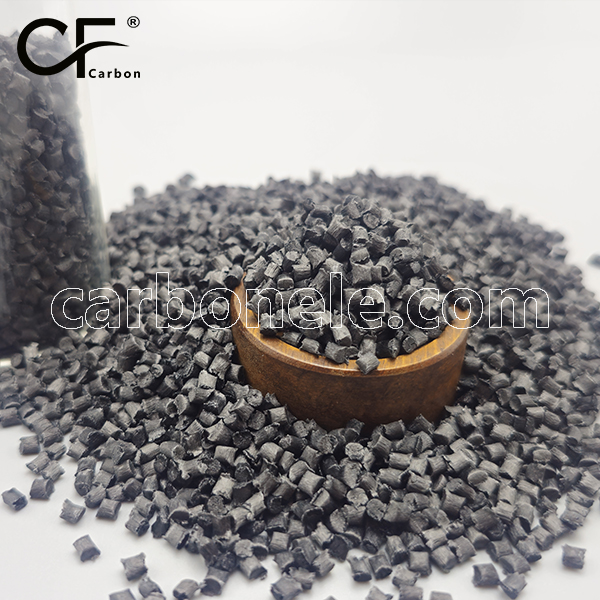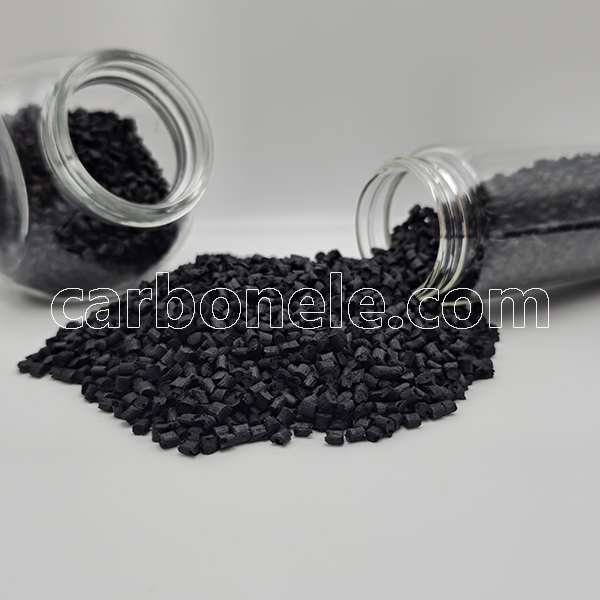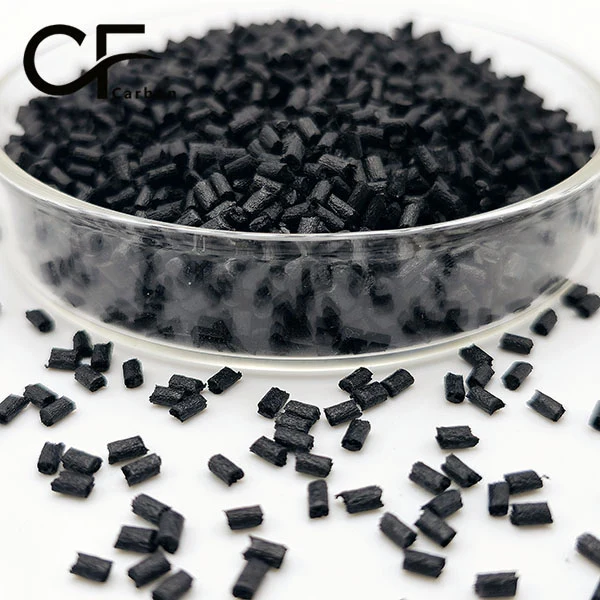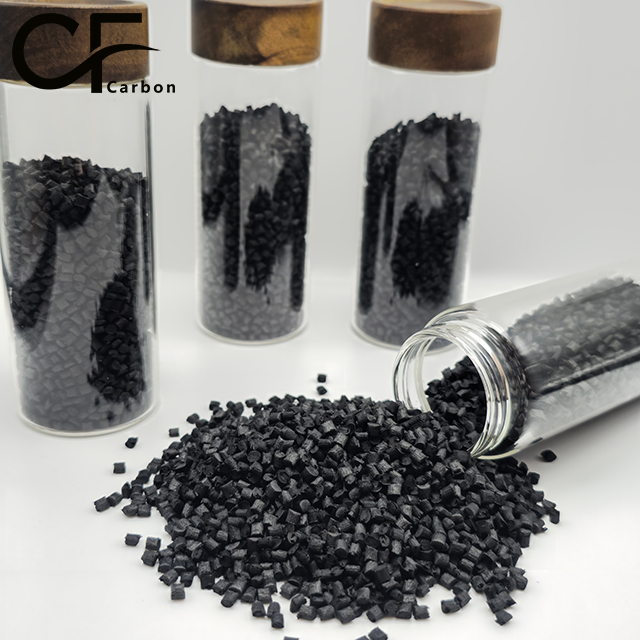
CF-R Thermoplastic Composites PA6 CF50 PA6-CF-BCA5
1: Tensile strength reaches up to 285 MPa.
2: Elastic modulus of 21 GPa for high stiffness.
3: Heat deflection temperature reaches 218°C.
4: Fatigue strength maintains 85% after 10⁷ cycles.
5: Molding shrinkage rate is only 0.2%.
- Manufacturer: Carbon New Material
- OEM/ODM: Acceptable
- Color: Black
- Free samples: ≤10kg
- MOQ: 100kg
- Port: Xiamen
- Model: PA6-CF-BCA5
- Fillers: SCF
I. PA6 CF50 Overview
CF-R Thermoplastic Composites are high-performance composite materials with a polyamide 6 (PA6) matrix and 50% carbon fiber content. Typical grades include PA6 CF50 and PA6-CF-BCA5, which incorporates an additional 5% specific compatibilizer. The incorporation of carbon fiber significantly enhances the material’s mechanical strength, rigidity, and thermal stability, while maintaining good processability, making it suitable for various demanding engineering applications.
II. CF-R Thermoplastic Composites Key Properties
1. Excellent Mechanical Properties
PA6 CF50 offers a tensile strength of up to 285 MPa and an elastic modulus of 21 GPa, representing an approximately 300% improvement over unreinforced PA6, making it suitable for high-load structural components.
2. Outstanding Heat Resistance
Heat deflection temperature (1.82 MPa) reaches 218°C, allowing for long-term use in high-temperature environments while maintaining dimensional and performance stability.
3. Low Warpage and High Dimensional Accuracy
The molding shrinkage rate of PA6-CF-BCA5 is only 0.2%, significantly reducing part warpage and meeting the assembly requirements for precision components.
4. Superior Fatigue Resistance
Fatigue strength remains at 85% of its initial value after 10⁷ load cycles, outperforming most engineering plastics.
5. Good Chemical Stability
Exhibits good resistance to lubricants, fuels, and most solvents. PA6 CF50 is particularly suitable for components within automotive engine compartments.
III. Material Primary Applications
This material is widely used in automotive lightweight components (e.g., transmission brackets, battery housings), aerospace structural parts, industrial robot arm sections and precision guides, sports equipment, and high-end electronic enclosures. The PA6-CF-BCA5 grade, due to its optimized interface, is particularly suited for dynamic structural parts and dynamic structural components subjected to complex stresses.
IV. CF-R Thermoplastic Composites Application Case in Automotive Lightweighting
A European automotive manufacturer adopted PA6 CF50 to replace traditional aluminum alloy for the battery module bracket in a new energy vehicle model, achieving a 40% weight reduction. The component underwent 2000 vibration cycles under environmental conditions ranging from -40°C to 120°C without cracks or deformation, effectively ensuring the safety and range stability of the battery system. The material also passed an electrolyte corrosion resistance test, increasing its service life by 30%.
For detailed technical parameters of PA6-CF-BCA5 or PA6 CF50, sample requests, or customized quotations, please contact us to obtain the latest data sheet and product catalog. Please note that the properties of carbon fiber-reinforced thermoplastic composites can be significantly influenced by the matrix resin type, fiber content, and production process. We recommend conducting comparative tests with specific types of carbon fiber-reinforced plastics based on actual application scenarios to accurately evaluate material advantages. Products from different manufacturers may vary in their performance focus.
CFRTP VERSUS CFRP
1. CFRTP demonstrates significantly faster processing time (5 minutes) compared to CFRP (45 minutes), representing a 90% reduction in manufacturing duration. 2. In terms of recyclability, CFRTP outperforms CFRP by a large margin, scoring 9 on a 1-10 scale versus CFRP's score of 2. 3. CFRTP exhibits superior impact resistance (90 kJ/m²) compared to CFRP (65 kJ/m²), showing approximately 38% better performance in this category. 4. While CFRP has higher temperature resistance (220°C) than CFRTP (180°C), both materials maintain adequate thermal performance for most applications. 5. CFRTP offers greater design flexibility (rating of 90) compared to CFRP (rating of 60), providing more versatility in manufacturing and application scenarios.

CFRTP VS. METALS
1. CFRTP exhibits the lowest density (1.50 g/cm³) among all compared materials, significantly outperforming traditional metals like steel (7.85 g/cm³) and copper (8.96 g/cm³), and even surpassing aluminum (2.70 g/cm³) and aluminum alloy (2.80 g/cm³). 2. In terms of strength-to-weight ratio, CFRTP demonstrates superior performance at 120 kN·m/kg, more than doubling the ratio of aluminum alloy (68 kN·m/kg) and far exceeding steel (26 kN·m/kg) and copper (14 kN·m/kg). 3. While steel shows the highest stiffness (200 GPa), CFRTP (150 GPa) outperforms aluminum (70 GPa), aluminum alloy (72 GPa), and copper (110 GPa), offering a favorable balance of rigidity and lightweight properties. 4. CFRTP achieves the highest corrosion resistance rating (9 on a 1-10 scale), surpassing all other materials including aluminum alloy (8), aluminum (7), copper (6), and steel (3), making it ideal for corrosive environments.
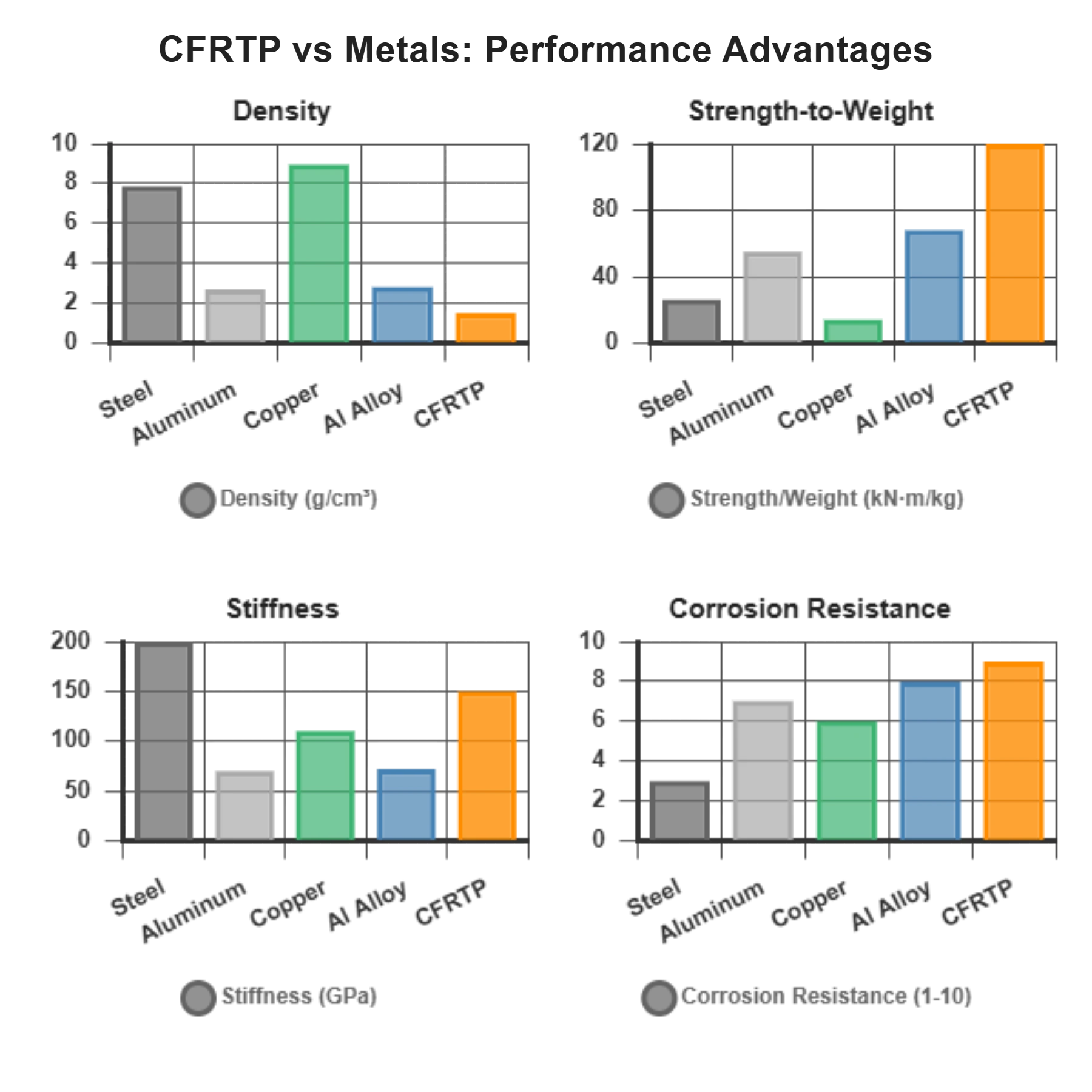


Frequently Asked Questions
Carbon (Xiamen) New Material Co., Ltd. aims to provide buyers with "one-stop" worry-free high-quality services. Here you can find all information about carbon fiber engineering plastics. If you still have questions, please send us an email for consultation!
-
How can I contact the manufacturer of a product that interests me?
When you find a product you are interested in, you can contact the manufacturer directly by sending an email and we will get back to you as soon as possible.
-
How do I find the products that interest me?
All you need to do is enter the keyword, product name in the search window and press the Enter key on your keyboard. Your search results page will then be displayed. You can also search within the product category pages on the home page. Each category is divided into subcategories, allowing you to refine your search and find products that interest you.
-
Where will I find a buying guide?
Please contact our after-sales service directly and we will provide you with a comprehensive operating guide.
-
What are CF Reinforced Thermoplastic Composites?
CF Reinforced Thermoplastic Composites are materials where carbon fibers are incorporated into a thermoplastic matrix. They combine the strength and stiffness of carbon fibers with the processability and recyclability of thermoplastics. For instance, they are used in automotive parts like bumper beams.
-
What are the benefits of CF Reinforced Thermoplastic Composites over traditional composites?
The key benefits include faster production cycles, easier recyclability, and better impact resistance. They also offer design flexibility. An example is in the manufacturing of consumer electronics casings where complex shapes can be achieved more easily.
-
How are CF Reinforced Thermoplastic Composites processed?
Common processing methods include injection molding, extrusion, and compression molding. Injection molding is widely used for mass production. For example, in the production of small components for the medical industry.
-
What industries use CF Reinforced Thermoplastic Composites?
They are utilized in aerospace, automotive, medical, and sports equipment industries. In aerospace, they can be found in interior components. In the medical field, they might be used in prosthetics.
-
How does the carbon fiber content affect the properties of the composites?
Higher carbon fiber content generally leads to increased strength and stiffness but may reduce ductility. A moderate content is often balanced for specific applications. For example, a higher content might be preferred in structural parts of a race car.
-
What are the challenges in using CF Reinforced Thermoplastic Composites?
Challenges include higher material costs, complex processing equipment requirements, and ensuring uniform fiber dispersion. Issues with adhesion between the fibers and the matrix can also arise. An example is in achieving consistent quality in large-scale production.







